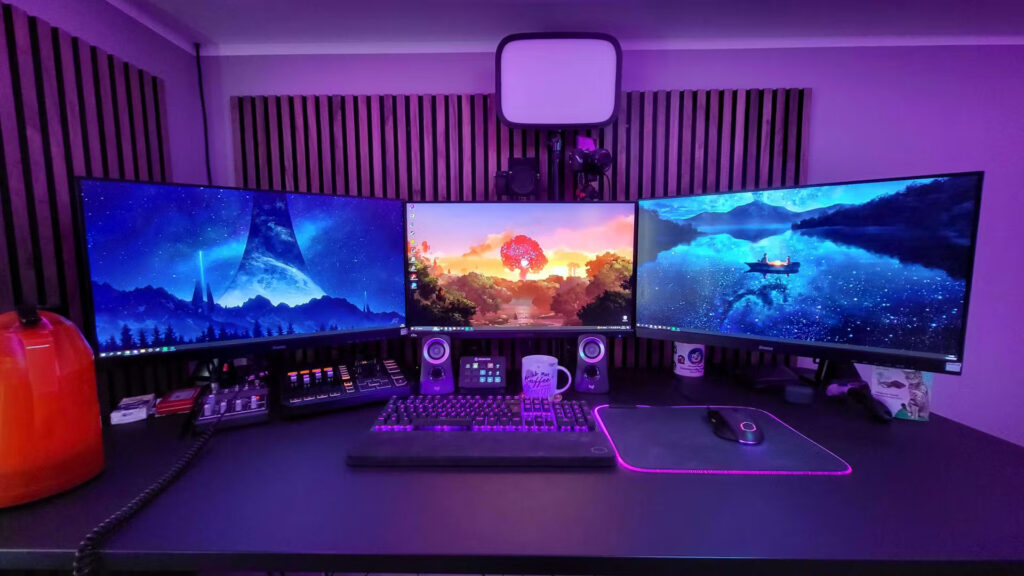In sectors like manufacturing, energy, automotive, and aerospace, Non-Destructive Testing (NDT) has emerged as a key component of quality control. As machinery and infrastructure become more advanced, the need for precise, reliable, and efficient inspection methods continues to grow. One of the most transformative innovations in NDT is the development of borescopes with defect measurement capabilities. These high-tech inspection tools not only provide detailed visual assessments but also allow professionals to measure cracks, corrosion, and structural deformations with pinpoint accuracy.
This article explores how the integration of measurement technology into borescopes is shaping the future of non-destructive testing and improving efficiency, accuracy, and cost-effectiveness in industrial inspections.
Advancements In Borescope Technology
Traditional borescopes have long been used for visual inspections, allowing professionals to navigate tight and inaccessible spaces in engines, turbines, pipelines, and other industrial components. While these devices have been instrumental in spotting issues, they could not provide precise measurements of detected defects.
Recent advancements have bridged this gap by integrating 3D measurement capabilities into modern borescopes. With the ability to analyze the depth, length, and width of defects in real time, professionals can now make data-driven maintenance decisions without relying on estimations.
Key Features Of Modern Inspection Borescopes
- Dual-View Imaging: Captures both forward and lateral perspectives for a comprehensive inspection.
- 3d Measurement Technology: Accurately assesses structural anomalies without requiring dismantling.
- Joystick Articulation: Provides better probe control, allowing for smooth navigation through complex machinery.
- High-Resolution Display: Delivers crystal-clear visuals for detailed defect analysis.
With these cutting-edge features, borescopes are redefining efficiency and accuracy in NDT applications.
The Role Of Measurement In Defect Analysis
The ability to measure defects during an inspection is a game-changer. Previously, inspectors relied on visual estimates and manual measurements, often requiring additional tools and increased downtime. A borescope that measures defects eliminates these inefficiencies by providing precise real-time data during the initial inspection process.
Advantages Of In-Situ Defect Measurement
- Early Detection Of Critical Issues: Identifying the exact size and depth of cracks or corrosion allows for proactive maintenance.
- Reduced Equipment Downtime: No need for unnecessary disassembly, leading to faster inspections.
- Compliance With Industry Standards: Many sectors require precise defect measurements to meet safety and operational regulations.
- Data-Driven Decision Making: Operators can determine whether a defect needs immediate repair or can be monitored over time.
By integrating high-precision measurement into borescope inspections, industries can significantly reduce risks and operational costs.
How This Technology Benefits Various Industries?
Aerospace Industry
Aircraft engines and turbine blades undergo extreme stress, making them prone to micro-cracks and material fatigue. A measuring borescope enables aerospace technicians to quantify damage and determine whether components meet safety standards without the need for extensive disassembly.
Automotive Sector
Modern vehicles incorporate complex engine and exhaust systems, requiring non-invasive inspections. Measuring borescopes helps manufacturers assess wear and tear on critical components, ensuring better performance and longevity of automotive parts.
Energy & Power Generation
In power plants, pipelines, boilers, and heat exchangers are exposed to high temperatures and pressure. Using a borescope with measurement technology allows technicians to monitor corrosion levels and structural integrity, preventing catastrophic failures and costly shutdowns.
Manufacturing & Heavy Equipment
For precision manufacturing and industrial machinery, ensuring that welds, joints, and components are free from defects is crucial. Measuring borescopes streamline the inspection process, allowing quality control teams to spot irregularities before products reach the market.
Reducing Maintenance Costs & Improving Efficiency
Industrial maintenance is often one of the most expensive aspects of operations, especially when unexpected failures occur. Proactive inspections using advanced borescopes help prevent breakdowns before they happen, reducing both repair costs and downtime.
Key Cost-Saving Benefits:
- No Need For Full Disassembly: Reduces labor and repair time.
- Prevention Of Expensive Failures: Detects early signs of damage before they escalate.
- Improved Maintenance Planning: Helps industries schedule maintenance at the right intervals.
- Increased Equipment Lifespan: Regular monitoring of defects prevents long-term structural degradation.
Investing in advanced NDT tools leads to long-term savings and improved operational efficiency.
The Future Of Non-Destructive Testing
As industries continue to demand higher precision and reliability, borescope technology will evolve further. Future developments may include:
- Artificial Intelligence Integration: AI-driven defect recognition for automated inspections.
- Augmented Reality Displays: Providing real-time overlays of measurements and structural models.
- Wireless & Remote Inspection Capabilities: Allowing teams to conduct inspections from a distance.
- Miniaturization Of Probes: Enabling inspections of even smaller and more delicate components.
The next generation of NDT will be more accessible, quicker, and more accurate than ever thanks to these developments.
Conclusion
A defect-measuring borescope is a ground-breaking, non-destructive testing tool that provides unmatched accuracy, effectiveness, and cost savings in a variety of industries. By integrating 3D measurement capabilities, dual-view imaging, and joystick articulation, these devices empower professionals to inspect, analyze, and act on critical data in real-time.

